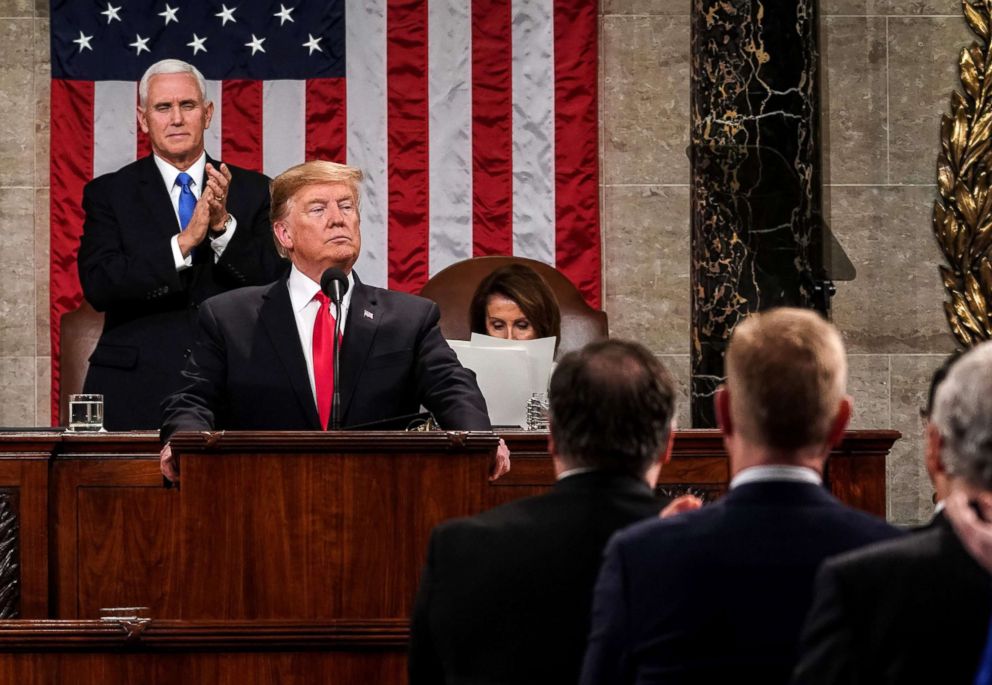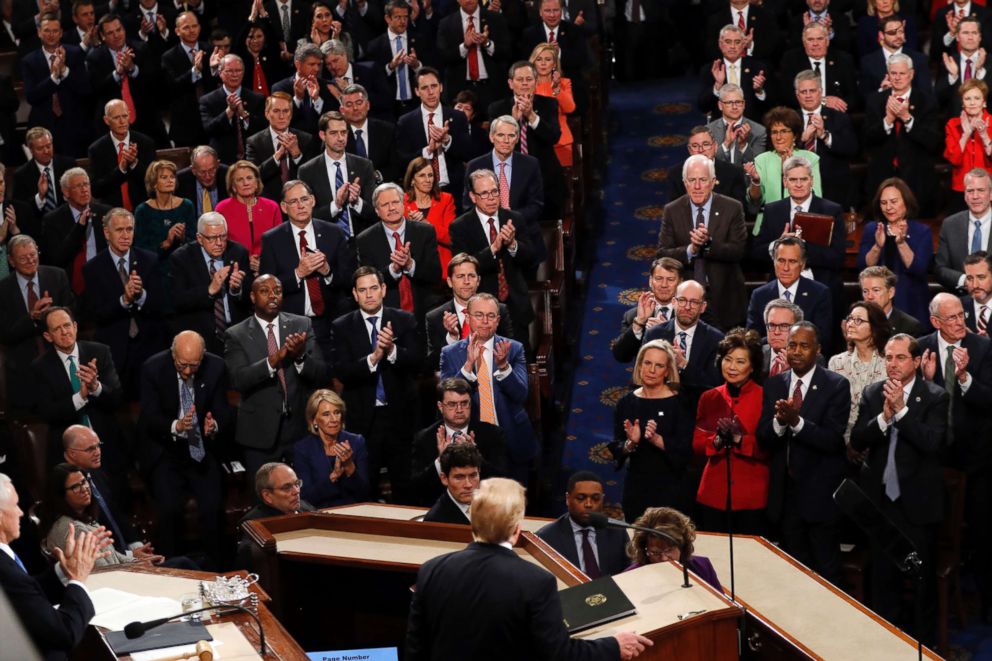In State of the Union address, Trump bookends bipartisanship around a core of raw division: ANALYSIS
Comparisons between midterm Trump and Reagan miss key differentiating factors.
The last president to give a State of the Union address with job approval ratings as low after two years in office as President Donald Trump was former President Ronald Reagan -- who was likewise hobbled by big losses in the first midterm election of his administration.
Yet there is a major difference between the circumstances these two presidents faced.
In 1983, the nation was in the midst of an economic recession, but voters were generally still positive about Reagan personally.
In 2019, Trump has overseen a strong economy for two years, but his job approval remains at historic lows and his personal favorability is dismal. When the economy started to grow and expand in late 1983 and throughout 1984, Reagan’s job approval rose dramatically and he ended up winning re-election in a landslide.
Trump doesn’t have this opportunity, so instead of an economic recession to overcome, he is facing a political depression. And this leads us to last night’s State of the Union address.

The president signaled before the address that he would seek to foster comity, to heal the country, and to end divisive politics. And his address reflected those themes at both the beginning and the end of his address, but the middle was rife with raw division and aggressive partisanship.
It might have been prudent for the person that wrote the first and last part to have chatted with the speechwriter who crafted the middle section.
It might have been prudent for the person that wrote the first and last part to have chatted with the speechwriter who crafted the middle section. The president had five lines in his speech on the bipartisan desire for infrastructure and 80 lines of his speech on the polarizing issues of immigration and a border wall. It should have been reversed, and Trump should have both literally and figuratively spent more time on building bridges and less time on building walls.
This speech seemed to be Trump’s first step on the path to his 2020 re-election effort, and it is clear what he is going for. It seems that he and his campaign team realize that a good economy is not going to deliver a re-election like it did for Reagan, and they have likely noted that his job approval numbers are dismal despite a growing economy. So, what is the president’s plan? By all indications, Trump seems intent on a cynical strategy of using wedge issues and widening the nation’s cultural divide.

The president knows full well that the immigration issue as he presents and champions it will only divide America even more and appeal only to a subset of Americans. And he knows full well what reaction he’d get by weighing in the way he did on the abortion issue. Both these issues are incredibly polarizing in Congress and among the American public, but they are wedge issues that motivate his base.
There are many months, weeks and days until Election Day 2020, but what we saw last night in Trump’s speech was that he believes his success will be determined by division instead of unity.
This campaign strategy highlighted by his State of the Union address seems a throwback to the GOP campaigns of the 1980s. Will it work 30 years later -- and after the country has become more diverse and progressive? Time will tell, but I have serious doubts. The president would have been much better positioned to work on bipartisan issues upon which consensus is available, demonstrate to the public that he puts country over party, and show that he can make Washington work. He is doing the exact opposite of that.
In the aftermath of this address, the president appears to have solidified his base and made any attempt by a Republican to beat him in a primary campaign a long shot. Simultaneously, I think Trump’s ongoing strategy of only appealing to his base and failing to understand why his party lost in the midterms will make him even more vulnerable for re-election.

Reagan knew that if he could stimulate the economy and get it moving, then as the economy grew so too would his job approval numbers. Trump appears to believe that a growing economy has never helped him and that a majority of the country doesn’t trust him, so he chooses not to try and rebuild that trust through real cooperation, but to lean into the distrust and division and try to motivate enough voters through appeals to cultural fears.
There are many months, weeks and days until Election Day 2020, but what we saw last night in Trump’s speech was that he believes his success will be determined by division instead of unity. I think that is a fatal mistake and a misread of the American public, but we shall see as this campaign unfolds ahead.




